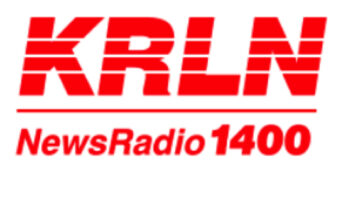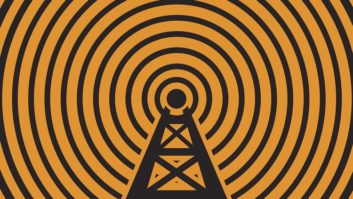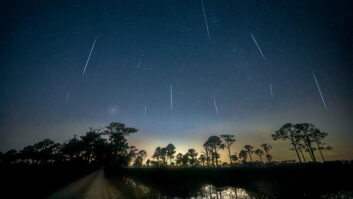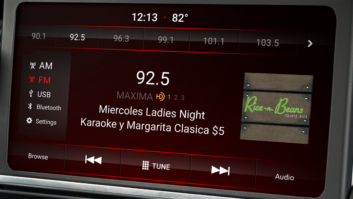Mother Nature is amazing. Vegetation will find a way to grow almost anywhere, including places at your transmitter site that can be problematic.
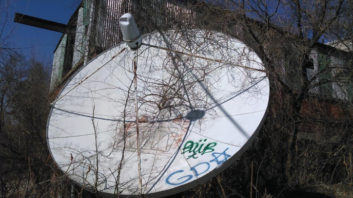
You can bet the satellite signal from the dish in Fig. 1 gets even worse when the leaves come out. The problem gets worse the closer you get to the dish. We can see in Fig. 2 that the sections of the dish have actually been deformed by the vines.
Yet another reason why site inspections need to occur regularly.
***
We’ve gotten encouraging comments from engineers reading Frank Hertel’s and Bill Ruck’s suggestions on rodent control.
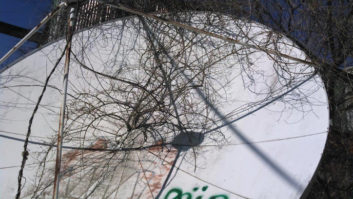
Bill pointed out that raptors provide “free” control, and offers this blog from the Cornell Lab of Ornithology to back up the claim: https://tinyurl.com/raptorfood. Here’s an excerpt (edited for style):
“Nonbreeding adults eat about a quarter-pound of food daily, or a tenth of their body mass — that’s about five small mammals. Nestlings start feeding themselves (swallowing lemmings whole) at about 16 days old. It’s estimated that a brood of two nestlings requires 26 pounds of food during the 40 days between hatching to fledging.”
[Read: It’s Time To Inspect That Air Conditioner]
Various vole and mouse species average about 1 ounce in weight (lemmings in the Arctic weigh a little more), so, if you do the math, every adult Roughie eats four to five small mammals every day (about 1,460 annually), and two nestlings consume roughly 278 rodents in only their first 40 days. Clutch size is usually three to five eggs, so the actual number of rodents consumed by nestlings is often much larger.
Red-tailed hawks are more common and are around all year long. They have about the same eating habits. Can anybody trap 1,500 mice a year using another method?
***
Among the many “take-aways” from the NAB Show each year are various useful promotional items that vendors offer attendees.
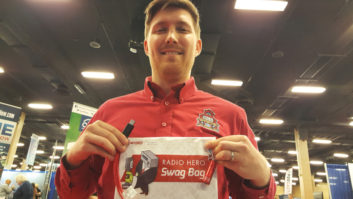
Since this year’s show was canceled, Inovonics Broadcast President and CEO Ben Barber is offering an Inovonics Radio Hero Swag Bag, pictured in Fig. 3, to broadcast engineers who request one by email to sales@inovonicsbroadcast.com. Just reference the swag bag mentioned in Workbench.
I won’t spoil the surprise, but you will find the contents useful.
***
With so many station voices operating from remote locations, Rob Atkinson, K5UJ, reports on an inexpensive equipment rack from, of all places, IKEA.
It’s called a Lack Rack. It’s a short table, the legs of which are placed at the perfect distance for mounting rack equipment. The flat table top provides a shelf top. It’s nothing fancy, but for 10 bucks, it might solve the question of how to mount several pieces of rack equipment for a temporary lash-up.
Find specifics at https://tinyurl.com/ikealackrack, and the IKEA product is here: https://tinyurl.com/ikearack.
***
James Potter owns Cutting Edge Engineering, which provides radio station technical service. James tried the free Paint.net software that we described in the March 4 issue. He writes, “Super-duper! Much more functionality than MS Paint, and — best of all — it’s free! Thanks!”
Thanks, James, for letting readers know. Dan Slentz, who told us about the free image and photo editing software for PCs, likes the innovative and intuitive user interface, which includes special effects. Glad the column could help.
***
In a previous Workbench column, I referred to transmission line “hot spots” detected by infrared camera inspection. Many of these hot spots occur at rigid line junctions, or 90-degree elbows where a bullet is overheating and ready to fail.
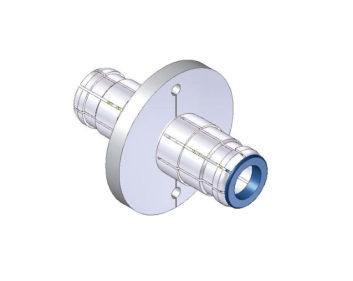
I received a message from an engineer wanting to know more about this — specifically, what is a “bullet”?
For those who need an explanation, simply put, a bullet joins the two center conductors of transmission line together (see Fig. 4 to get a better idea). Because of its cylindrical shape, it looks like a big piece of ammunition, hence its name.
Each end of a bullet fits inside the corresponding center or “inner” piece of transmission line. Improper bullet installation, wide temperature swings or movement of the line over time can cause the bullet to weaken and not make a good tight connection. The result is heat buildup and eventual failure.
Keep in mind, there’s usually a lot of power passing through this center conductor. The whole point of periodically measuring the temperature of these junctions is to spot a potential failure before catastrophic damage occurs.
John Bisset has spent over 50 years in the broadcasting industry and is still learning. He handles western U.S. radio sales for the Telos Alliance. He holds CPBE certification with the Society of Broadcast Engineers and is a past recipient of the SBE’s Educator of the Year Award.



